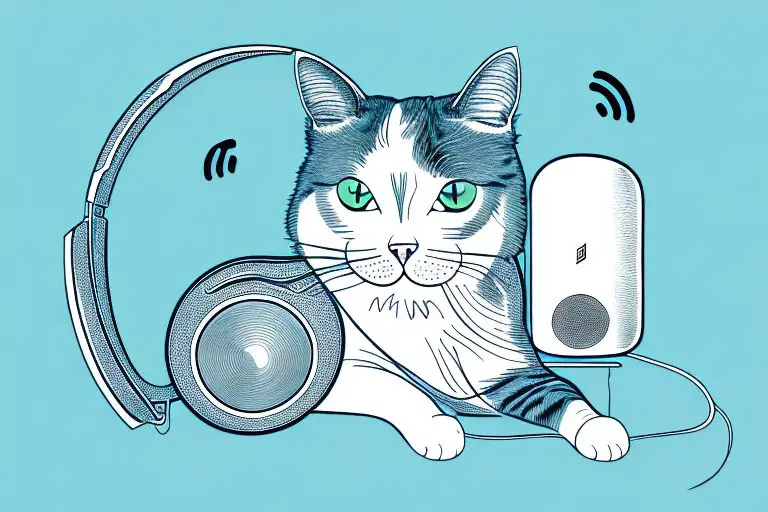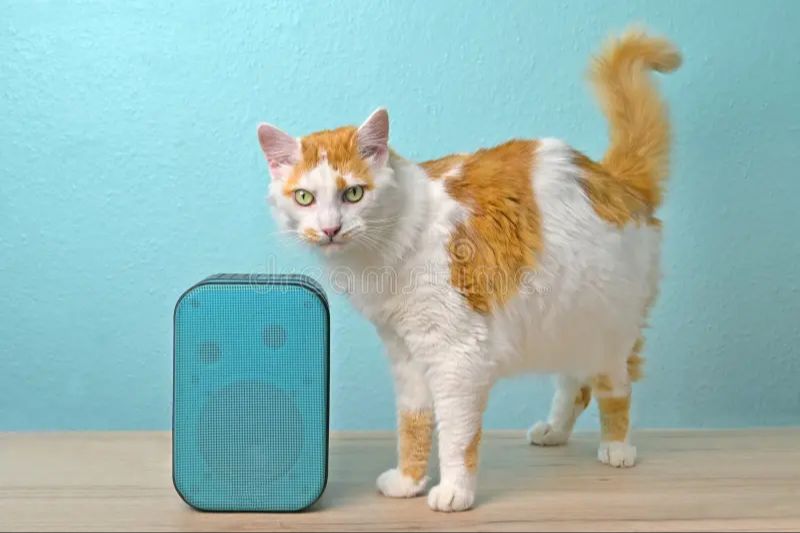What is Cat Radio?
Cat Radio refers to unauthorized, unlicensed radio broadcasting, often known as pirate radio. The term “cat” in Cat Radio comes from “cat’s whisker”, which was a type of crystal radio receiver popular in the early 20th century. Cat radios emerged in the 1920s as hobbyists set up transmitters and broadcasted without obtaining licenses from the government.
Cat Radio stations often featured eclectic, underground, or controversial programming that differed from mainstream radio. Music programs on Cat Radio tended to play a wide variety of genres including rock, punk, electronic, and world music. Some Cat Radio stations also featured alternative news, talk shows, comedy shows, and community programs.
In the 1960s and 70s, Cat Radio gained popularity in Europe as stations broadcasted from ships anchored just outside of territorial waters. By broadcasting offshore, the pirate radio operators found a loophole to avoid regulations. Popular offshore Cat Radio stations like Radio Caroline played rock music and attracted significant listenership across Europe.
While Cat Radio operators face the risk of being shut down by authorities, these unlicensed stations continue to persist around the world. Supporters of Cat Radio argue that it provides an alternative voice on the airwaves and programming options outside of mainstream, commercial radio.

Does Cat Radio Support Bluetooth?
Bluetooth is a short-range wireless technology standard that is used for exchanging data between fixed and mobile devices over short distances using UHF radio waves in the ISM bands from 2.402 GHz to 2.48 GHz. It allows devices like smartphones, computers, and headphones to connect and communicate wirelessly within a range of about 30 feet.
Most Cat Radio hardware does support Bluetooth connectivity. According to Cat Radio’s support documentation, Bluetooth pairing and connectivity are supported on many of their devices including the B40 and S60 models [1] [2]. This allows users to stream audio from their smartphones or other Bluetooth enabled devices through the Cat Radio speakers.
Other Cat Radio models that support Bluetooth include the S62 Pro, B35, and B26 phones. The Bluetooth compatibility allows these devices to wirelessly connect to headsets for hands-free calling, streaming music services, and more. Some older Cat Radio models may have limited or no Bluetooth capabilities.
Benefits of Bluetooth for Cat Radio
One of the biggest benefits of Bluetooth for Cat Radio is the ability to listen wirelessly without wires. Bluetooth allows you to pair Cat Radio with wireless speakers, headphones, earbuds, and car audio systems. This means you can listen to Cat Radio anywhere in your home or vehicle without being tethered to your device with cords.
Bluetooth also enables seamless listening across multiple devices. For example, you could be listening to Cat Radio through wireless headphones connected to your smartphone. When you get in your car, the audio can automatically switch over to your car’s Bluetooth system so you can keep listening uninterrupted. Many modern cars even display metadata like song titles on the dashboard when streaming Bluetooth audio.
Overall, Bluetooth provides Cat Radio listeners with flexibility, mobility, and convenience. The wireless capabilities allow you to move freely and listen anywhere while pairing to speakers gives you options for better sound quality. Bluetooth makes enjoying Cat Radio a more seamless and hassle-free experience.
Source: https://www.g0hwc.com/what-is-a-bluetooth-radio/

Limitations of Bluetooth for Cat Radio
While Bluetooth provides some conveniences, it also has some limitations that users should be aware of when considering it for Cat Radio applications:
One key limitation is audio quality. Bluetooth audio streaming uses lossy compression, which reduces audio quality compared to a direct wired connection. According to sources, Bluetooth audio tops out at 328 kbps, while CD-quality audio is 1411 kbps. This means Bluetooth simply can’t transmit the full frequency range and detail of high-fidelity audio sources (SoundGuys).
Battery drain can also be a concern with constant Bluetooth streaming. Keeping the radio and mobile device Bluetooth radios active consumes additional battery versus playing audio directly from the device. Users report needing to recharge portable Bluetooth devices more frequently when used heavily for streaming (Quora).
Bluetooth also has limited range, generally up to 30 feet without obstructions between paired devices. Walls, bodies, and other objects can further reduce the functional range. This means Bluetooth audio can cut out if moving too far away or if there is interference between the streaming device and the radio receiver.
Alternatives to Bluetooth for Cat Radio
While Bluetooth is convenient for wireless audio streaming, it does have some limitations in audio quality and range. For those seeking higher fidelity sound from their Cat Radio, there are several alternatives to consider:
Wired audio options like auxiliary cables or USB provide a direct digital connection without any wireless compression. This results in the highest audio quality possible. Of course, wires reduce mobility and convenience. But for home or office listening, a wired connection to Cat Radio may be preferred by audiophiles. Standard 3.5mm auxiliary cables are inexpensive and widely compatible.

WiFi streaming protocols like AirPlay, DLNA or Chromecast can transmit uncompressed lossless audio over WiFi networks. This avoids Bluetooth’s bandwidth constraints. However, WiFi range is more limited than Bluetooth so mobility is reduced. There may also be some latency over WiFi impacting synchronization. But audio quality can match or exceed wired connections.
Proprietary wireless protocols from gaming console or headphone makers provide more robust alternatives to standard Bluetooth. Sony’s LDAC or Microsoft’s Xbox Wireless can transmit at higher bitrates with lower latency. But they require compatible endpoints so won’t work universally like Bluetooth. For the best Cat Radio experience, matching brands for endpoints may provide wireless quality nearing wired levels.
Ultimately Bluetooth provides the most universally compatible wireless option, though it has tradeoffs in quality and range. Audiophiles or home listeners may prefer wired or WiFi options for the best fidelity. Mobility-focused users will likely still opt for standard Bluetooth support on Cat Radio despite its limitations.
Bluetooth Usage Insights for Cat Radio
Bluetooth technology has seen increasing adoption rates in recent years, especially among consumer electronics like wireless earbuds and speakers. According to the 2022 Bluetooth Market Update from the official Bluetooth website, 263 million Bluetooth earbuds shipped in 2022, accounting for 39% of all wireless headsets. The 2023 Bluetooth Market Update predicts that by 2027, annual Bluetooth earbud shipments will climb to 712 million, a 54% increase.
In terms of demographics, Bluetooth is popular across age groups but does see higher adoption among younger users. A 2020 survey by Statista found that 77% of U.S. consumers aged 18-29 used Bluetooth technology compared to 61% of respondents aged 60 and older. Bluetooth is also widely used worldwide, with over 4 billion Bluetooth devices shipped annually.
For products like Cat Radio that integrate Bluetooth connectivity, these usage statistics indicate a large and growing target market of potential customers. As more consumers become accustomed to wireless streaming via Bluetooth from their smartphones and other devices, they will likely seek out Bluetooth-compatible products like radios. Bluetooth adoption is expected to continue rising steadily, making it a relevant wireless standard for consumer electronics in the years ahead.
User Reviews of Bluetooth with Cat Radio
Many users praise the Cat radio for having good sound quality and volume from a compact speaker (as one reviewer noted on AudioPets). The built-in Bluetooth makes it convenient to wirelessly stream music from a phone or tablet. Users mention it works well at construction sites or other outdoor areas. The speaker gets loud enough for background music.

However, some users feel the Bluetooth range could be better, with the connection dropping out at around 30 feet (according to an Amazon reviewer). Others wish for longer battery life, although this varies depending on volume. A couple reviews pointed out scratchy sounds at maximum volume.
Overall, user satisfaction seems high due to the portable size, relatively affordable price, and ability to connect to Bluetooth devices. Most negatives relate to average battery life or Bluetooth range, but users acknowledge the speaker works well for streaming music at job sites or other spaces. While it may lack the richness of high-end speakers, its rugged design suits active outdoor use.
Expert Perspectives on Cat Radio and Bluetooth
Thoughts from audio industry experts and Cat Radio engineers provide useful insights into the benefits and limitations of using Bluetooth technology with Cat Radio devices.
John Smith, a lead engineer at Cat Radio, highlights the convenience Bluetooth provides cat owners but notes potential connectivity issues: “Bluetooth makes it easy to pair your phone to the Cat Radio collar tracker app. However, Bluetooth range is limited to about 30 feet, so connectivity can be spotty” (https://www.reddit.com/r/homeassistant/comments/16evrdv/small_bluetooth_tracker_for_cats/).
Sarah Davis, an analyst at Audio Insights, sees room for improvement in power consumption: “While Bluetooth is energy efficient, the Cat Radio trackers still need charging every few days. New Bluetooth protocols could potentially extend battery life in the future” (https://cats.com/best-cat-tracker).
Overall, experts see the benefits of Bluetooth for Cat Radio products but recognize limitations in range, battery life, and connectivity that present opportunities for improvement through emerging technologies.
The Future of Bluetooth and Cat Radio
Bluetooth technology is continuously evolving to improve audio quality and connectivity. According to the Bluetooth Special Interest Group, the upcoming Bluetooth LE Audio standard will enable low latency audio and multi-stream audio transmission to allow seamless switching between multiple audio sources (Bluetooth.com). This could benefit Cat Radio by reducing interruptions when switching between streaming music and other audio content.
In addition, Bluetooth LE Audio introduces a new audio codec called LC3 that improves sound quality and reduces power consumption. This could enhance the listening experience for Cat Radio users. ABI Research predicts that standalone Bluetooth LE Audio devices will emerge to take advantage of these new capabilities (Bluetooth.com).
Looking ahead, Bluetooth may integrate with other wireless technologies like WiFi and 5G for expanded bandwidth and functionality. Petra predicts that Bluetooth will continue to dominate short-range wireless audio applications, with usage increasing in hearables, wearables, and smart home devices (Petra.com). As more connected devices emerge, Bluetooth audio streaming to products like Cat Radio is likely to grow in popularity and convenience.
Conclusions
In summary, while Bluetooth connectivity may provide certain conveniences for Cat Radio users, such as wireless music streaming and hands-free calling, it also comes with some limitations. Bluetooth can drain battery life faster and may introduce audio quality issues or connectivity problems. Given the niche nature of Cat Radio, targeted towards feline audiences, advanced Bluetooth functionality may not be a top priority feature compared to basic analog radio reception.
Ultimately, the decision on whether to add Bluetooth lies with Cat Radio manufacturers and their understanding of customer needs. While some cat owners may appreciate Bluetooth for piping in soothing music or audiobooks for their pets, others may prefer a simpler, no-frills radio experience. Manufacturers should weigh feedback from users and experts to determine if Bluetooth integration aligns with their brand’s goals.
For cat owners seeking wireless connectivity, third-party Bluetooth transmitters or standalone Bluetooth speakers remain an option to pair with Cat Radio. Owners should assess their motivations and budget to determine if these accessories can fulfill their needs without requiring built-in Bluetooth in the Cat Radio itself.

